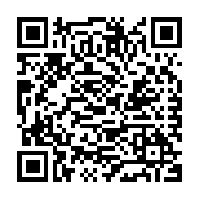Just like the Title says this is a
cache by the Numbers.
This is a pretty simple cache with something a
little"extra".
On Cyber Monday of this week I received
an advertisement for a new Travel Bug.
It is called the "Code Travel Bug".
I have been seeing this new code a couple different
places lately and I was immediately
intrigued.
I decided to search out some info on
this Code and found out they are
called QR Codes, QR for Quick Response.
This is what I have learned about QR
Codes,
A QR Code (it stands for "Quick Response") is a mobile phone
readable barcode that's been big in Japan forever, broke into
Europe a while back, and is now getting traction in USA.
In its simplest sense think "print based hypertext link" -
simply encode a URL into the QR Code and then point a mobile phone
(or other camera-enabled mobile) at it. If the device has had QR
Code decoding software installed on it, it will fire up its browser
and go straight to that URL.
But it doesn't stop there - a QR Code can also contain a phone
number, an SMS message, V-Card data or just plain alphanumeric
text, and the scanning device will respond by opening up the
correct application to handle the encoded data appropriately
courtesy of the FNC1 Application Identifiers that are embedded in
the encoded data.
The technical specifications for a QR Code are set down in the
ISO-18004 standard so they are the same all over the world, and the
only significant variations from one QR code to another (apart from
the data it contains) is the number of modules required to store
the data. A Version 1 QR Code is a 21x21 array of data elements
with the array increasing in size by 4 modules for each increase in
version number. The largest standard QR Code is a Version 40 symbol
that 177x177 modules in size and can hold up 4296 characters of
alphanumeric data (theoretically) compared to 25 characters for a
Version 1 QR Code.
While there is still a lot of scope for improvement, the
resolution of average present-day camera-enabled portable devices
is such that the size of the data modules (dots) on a QR Code of
Version 5 or above (37x37) presents a real risk of incorrect
decoding of the symbol by the device. When creating a QR Code
intended for use with mobile phones and PDA's it's best to stick to
Version 4 or lower, and a QR Code symbol of at least 2cm
(0.85inches) across.
To make things a bit more robust, the QR Code also contains its
own error correction data, internal orientation calibration and
self-alignment markers. In this way it doesn't matter whether the
QR code is upside down or wrapped around a curved surface, the
message will still get through.
A QR Code looks like this,

Anyone with a smart phone can get a QR Reader in there app
store, because the developer is not pursuing his Patent Rights a QR
Reader is Free.
You can also get a free QR Code Generator for your PC by
doing a Google search.
Extra,
Extra!
Here is the extra of this
cache,
For you Cachers that love to log
Trackables, (Like Myself)
This cache has 3 QR Codes that you can scan to get the Tracking
Codes so you can Discover 3 of my Personal
Geocoins.
(If you don't have a smart phone and really want to discover
these 3 Personal Geocoins, after you log this cache you can send me
an e-mail and I will give you the codes.)
This is just a new twist using modern
technology playing this fun game they call
Geocaching!